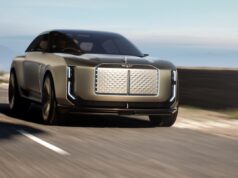
BMW has been talking about the return of four-cylinder powered models in the U.S. for a while and earlier this month, BMW unveiled the new turbocharged 2.0L in the X1. BMW is now releasing more details about the 2.0L four-cylinder that will be the first time BMW has sold a four-cylinder powered model in the US since 1999.
The 2.0L engine features a twin-scroll turbocharger and puts out 240 horsepower and 260 lb-ft. of torque. BMW also pointed out that the 2.0L puts out more horsepower and torque than its normally-aspirated 3.0L inline-six cylinder.
BMW has yet to officially announce which models will be powered by the new four-cylinder, other than the X1. It’s been reported that the Z4 will get the new engine and its also expected that it will be offered in the 1 and 3 Series.

Related Stories:
2012 BMW X1 xDrive28i Features BMW’s New TwinPower Turbo 4-Cyl
PRESS RELEASE:
BMW Four-Cylinder Engines Return to US in 2011
New 2.0-liter turbocharged four-cylinder offers performance of a six
Woodcliff Lake, NJ – January 28, 2011… BMW announced the return of a four-cylinder engine to the US BMW line-up for the first time in since 1999. Like the company’s latest 3.0-liter turbo inline six, the new 2.0-liter engine will combine twin-scroll turbocharging with high-pressure direct-injection and BMW’s VALVETRONIC intake control. With 240 horsepower and 260 lb-ft of torque, it offers more power and torque than BMW’s normally aspirated 3.0-liter inline six. It will arrive later in 2011.
Maximum output of 240 horsepower is achieved at 5,000 rpm, 1,500 rpm lower than in the normally-aspirated 3.0-liter inline six. The peak torque of 260 lb-ft, comes on stream at just 1,250 rpm. Not only is that 30% more torque than the aforementioned inline six, it also peaks 1,500 rpm earlier. The vigorous power comes on early and climbs steadily all the way to redline.
The four-cylinder engine with its all-aluminum crankcase is lighter and more compact than a six-cylinder engine of equivalent power. The turbocharger is a twin-scroll system. The exhaust streams leaving the two pairs of cylinders are kept completely separate as they flow through the exhaust manifold and the turbocharger, taking a spiral path to the turbine wheel. This configuration results in very low exhaust back pressure at low engine rpm, and allows the energy of the exhaust gas pulses to be optimally managed and translated into powerful rotation of the turbine blades, without a delay in throttle response.
The patented BMW VALVETRONIC system with seamlessly variable intake valve lift control dispenses with the throttle valve system typical of conventional engines. Instead, combustion air mass is controlled inside the engine, resulting in much faster response. Pumping losses are kept to a minimum, making the engine more efficient.
The High Precision Injection direct-injection system also helps to improve efficiency. Centrally positioned between the valves, solenoid injectors with a maximum injection pressure of 200 bar (2,900 psi) precisely control the supply of fuel. The fuel is injected very close to the spark plug, resulting in clean and homogeneous combustion.
The cooling effect of the injected fuel also allows for a higher compression ratio than might otherwise be possible. This results in further efficiency improvements.
US-specific model and timing information will follow at a later date, but this new chapter in the story of BMW EfficientDynamics will arrive later this year.








